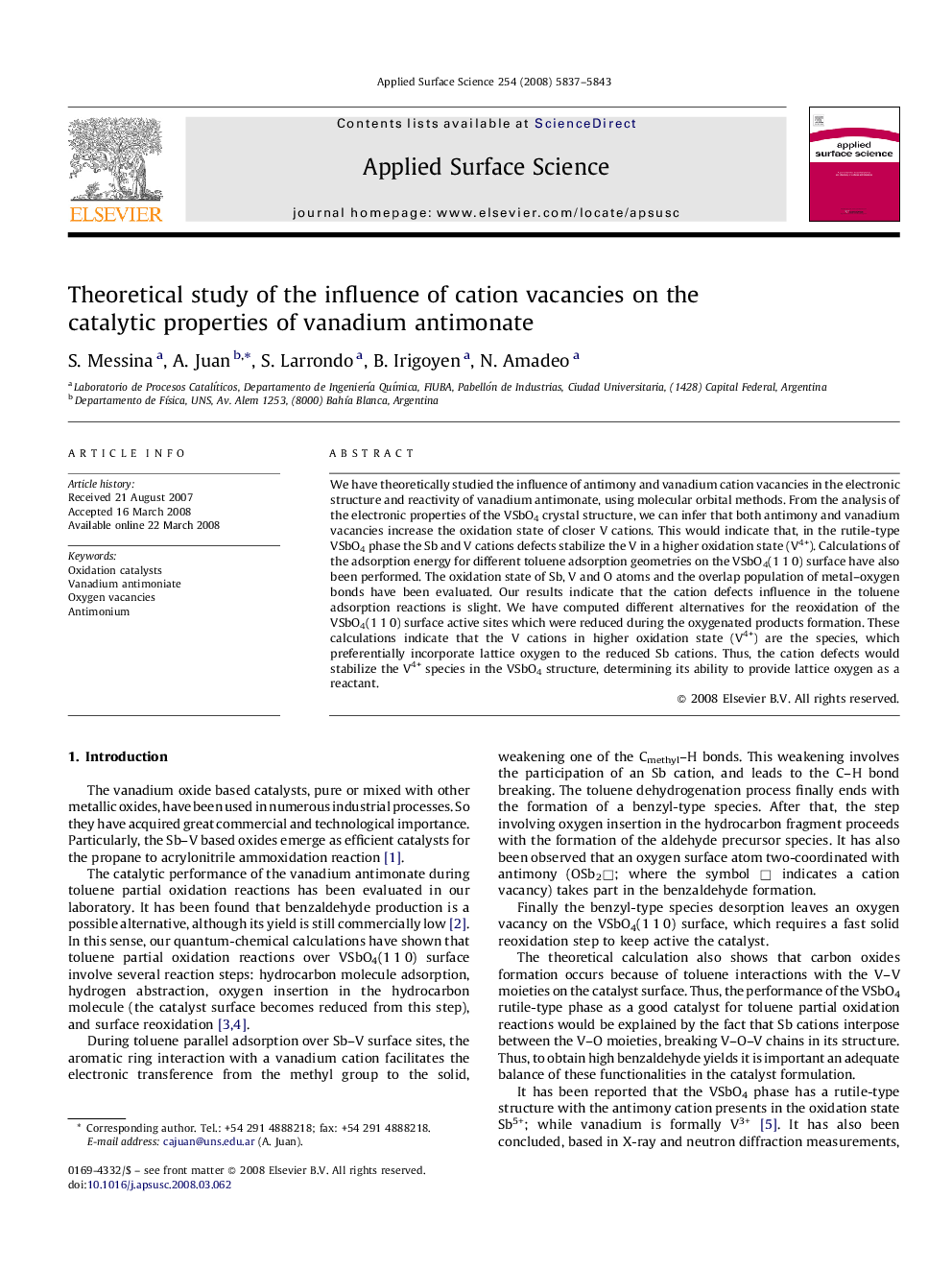| Article ID | Journal | Published Year | Pages | File Type |
|---|---|---|---|---|
| 5362385 | Applied Surface Science | 2008 | 7 Pages |
We have theoretically studied the influence of antimony and vanadium cation vacancies in the electronic structure and reactivity of vanadium antimonate, using molecular orbital methods. From the analysis of the electronic properties of the VSbO4 crystal structure, we can infer that both antimony and vanadium vacancies increase the oxidation state of closer V cations. This would indicate that, in the rutile-type VSbO4 phase the Sb and V cations defects stabilize the V in a higher oxidation state (V4+). Calculations of the adsorption energy for different toluene adsorption geometries on the VSbO4(1Â 1Â 0) surface have also been performed. The oxidation state of Sb, V and O atoms and the overlap population of metal-oxygen bonds have been evaluated. Our results indicate that the cation defects influence in the toluene adsorption reactions is slight. We have computed different alternatives for the reoxidation of the VSbO4(1Â 1Â 0) surface active sites which were reduced during the oxygenated products formation. These calculations indicate that the V cations in higher oxidation state (V4+) are the species, which preferentially incorporate lattice oxygen to the reduced Sb cations. Thus, the cation defects would stabilize the V4+ species in the VSbO4 structure, determining its ability to provide lattice oxygen as a reactant.
